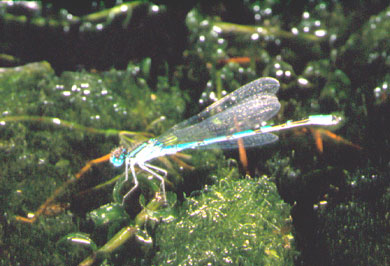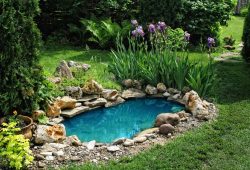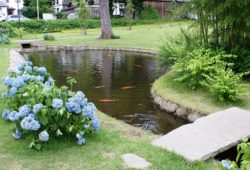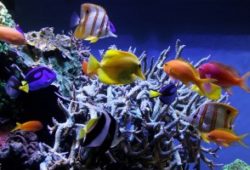Frequently asked questions about pond life
The following article is devoted to Frequently asked questions about pond life.

Contents
Is October a good time of year to clean my pond?
Not bad. Wait until the plants look a bit rough, then trim away dead foliage and divide any plants that need it.
Compost or burn waste materials – keep them well away from natural waterways, even ditches. Keep plants submerged, ideally, or very moist, while you continue work.
Siphon or pump off the water, catching the fish as you go – removing them to the largest container available. Retain as much water as you can – keep some to wash the media. Remove the sludge with a bucket or dustpan, mopping out the dregs with a sponge or cloth.
Scrub the walls of the pond clean with a soft brush – as hard as the liner will take, and rinse and drain the pond again.
Wash out the media gently in pond water, and clean the pump case, inside and out, and the impeller and its housing.
Refill the pond with a hose, and use a good dechlorinator capable of removing chloramine as well as chlorine. Only then add the old water.
Acclimatise the fish to the new water by mixing some into their holding tank every few minutes. The new water might differ in chemistry a little. Replace the plants then return the fish.
If the pond looks very clear and open with no shelter, consider adding a bucket or even a clean dustbin as shelter on the bottom of the pool until the pond settles down.
Don’t feed (or feed only very lightly) for the next few weeks to minimise pollution problems – there will still be food on the submerged plants.
Are any of the creepy crawlies in my pond dangerous to my fish?
The majority of the tiny creatures in a garden pond are harmless and include: gastropods; insects; bugs and crustaceans.
Non-aquatic flies may visit your pond; most will be eaten if they become settle on the surface. Some will dip on the surface and lay eggs, while others (damselflies) will crawl down plant stems to deposit their eggs.
These will develop as larvae and/or nymphs before pupating. These underwater stages of development form a major part of the natural diet of many fish, and include the bloodworms (larvae of chironomid flies and mosquitos), and the resultant pupae or nymphs (intermediate stages).
These are all harmless. The predators of this world are the nymphs of the dragonflies, damselflies and the alder fly larvae which will happily take other insects, small fry, and tadpoles.
While the adult dragons and damsels are also predators the sedge-like alder flies live just a few days and don’t feed or take only liquid food – the larvae make up for this…
Harmless nymphs you may encounter include members of the mayfly family – Ephemeroptera. The most common are the Olives – small usually olive green upwinged flies with tiny larvae and nymphs.
Bugs, a description which covers some of the most predatory mini-creatures includes the backswimmers, pond skaters and water measurers and the scavenging Corixa (Water boatmen), plus rarely seen critters like the Water scorpion.
All pierce their food after capturing it and suck out the juices.
Great diving beetles and their larvae are very predatory too with a paralysing bite, and like some bugs they fly from pond to pond to find their way almost anywhere.
There is one species of aquatic spider, the Water spider Argyroneta aquatica which spins an air-filled underwater nest and carries bubbles of air on its body. It’s now very rare.
Pond crustaceans are represented by the Freshwater shrimp Gammarus and the Hog louse Asellus – easily recognised and possibly sometimes confused.
Two types of gastropod may be encountered. The various water snails which always seem to arrive – and thrive – on plants, whether you want them or not, and the Freshwater mussels sometimes sold as water purifiers. Most small ponds don’t offer enough food and any “purification” is minimal so don’t bother with them.
Leeches are rarely a problem, and only a handful of species affect fish. You can treat for the adults and eradicate them but they leave tough leathery egg cases which are almost impossible to destroy.
Can the presence of any of these creatures tell me anything about water quality?
The presence of Rat-tailed maggots or tubifex worms (sometimes used as fish food) should ring alarm bells, as they live in deoxygenated water.
On the other hand, any pond with them in is probably fish-free already…
This article was first published in the October 2003 issue of Practical Fishkeeping Magazine.



